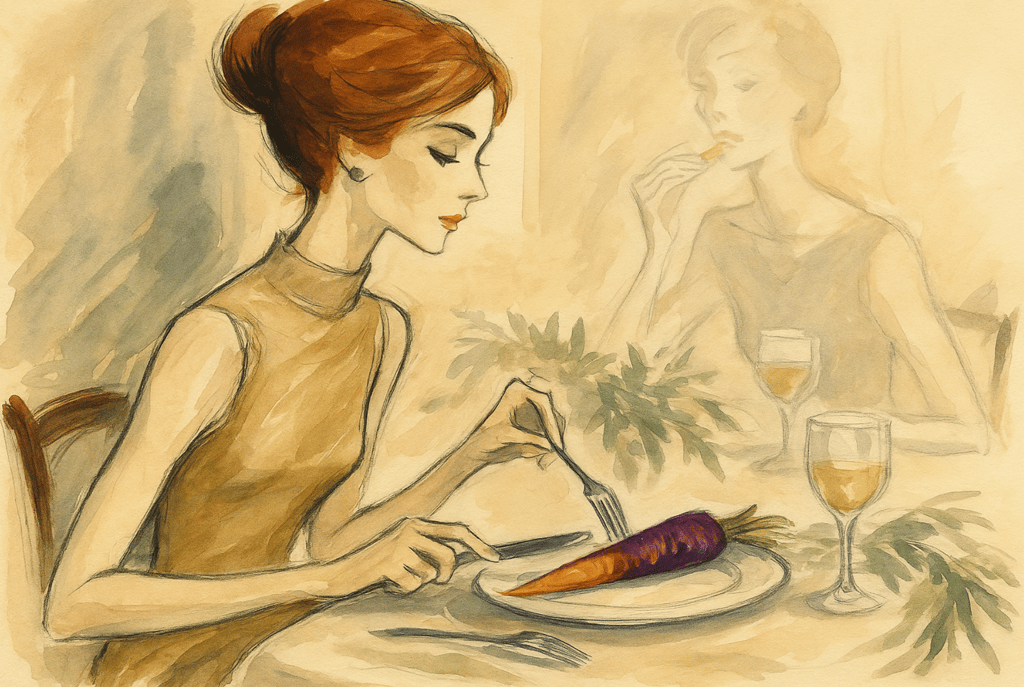The Purple Carrot That Lost the Crown: How Politics Made Our Food Orange
Did you know carrots used to be purple? Discover the royal history behind orange carrots, and why we forgot the rainbow roots of this everyday veg
FOOD HISTORY & TRADITIONS


Long before baby carrots were stuffed into lunchboxes, the original carrot varieties grew wild in the dusty soils of Central Asia. The earliest cultivated carrots, traced back to 10th-century Persia (modern-day Iran and Afghanistan), were purple or white. These were earthy, fibrous roots — far from today’s sweet, crunchy snack — and they were rich in medicinal properties and revered for their vibrant colours.
Purple carrots, in particular, were full of anthocyanins — powerful antioxidants also found in blueberries — known for fighting inflammation and supporting heart health.
These were the carrots of folk medicine, not food marketing.
The Dutch Rebrand: How Orange Carrots Took Over
Fast forward to 17th-century Netherlands. Dutch horticulturists were perfecting plant breeding techniques, and in the process, they created something new: a uniformly bright orange carrot. Why? Not for nutrition or flavour — but for politics.
This new carrot was bred in honour of the House of Orange-Nassau, the Dutch royal family. It was a patriotic vegetable, created to symbolise loyalty to the crown. It soon became a national emblem — and from there, it spread across Europe.
Orange carrots were sweeter, softer, and easier to grow in colder climates. But more importantly, they looked the part. Bright, predictable, and uniform — ideal for markets and consumers who wanted consistency.
The purple, red, white, and yellow varieties faded into obscurity.
So Are Purple Carrots Healthier?
Yes — in some ways. Purple carrots contain anthocyanins, which:
Act as antioxidants
Support heart and brain health
May reduce cancer risk
Help with inflammation
They also still contain beta-carotene, the same nutrient that gives orange carrots their glow and supports eye health.
So in a sense, purple carrots offer the best of both worlds: the classic Vitamin A benefits plus a broader antioxidant profile.
Why Don’t We See More of Them?
Despite their benefits, purple carrots never reclaimed the spotlight. Why?
Supermarkets prefer uniformity. Purple varieties stain packaging and vary in size and shape.
Consumers expect orange. Anything else seems strange.
Purple carrots can taste different. Some are earthier or spicier — not always ideal for mass appeal.
Orange carrots are easier to market. They’re sweet, smooth, and familiar.
But things are changing. Thanks to farmers’ markets, seed savers, chefs, and heritage veg campaigns, purple carrots are coming back — and with them, a taste of history.
What’s On Your Plate Is Never Just Food
When we look at the history of the carrot, it’s not just about farming. It’s about power, branding, identity, and what gets remembered versus what gets erased.
Orange carrots won the cultural spotlight. But purple ones? They’re a reminder that the past is full of colour, diversity, and nutrition we were told to forget.
So next time you spot a bunch of rainbow carrots — pick the purple one. Take a bite. And remember: even vegetables have stories to tell.
